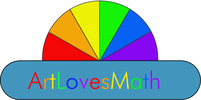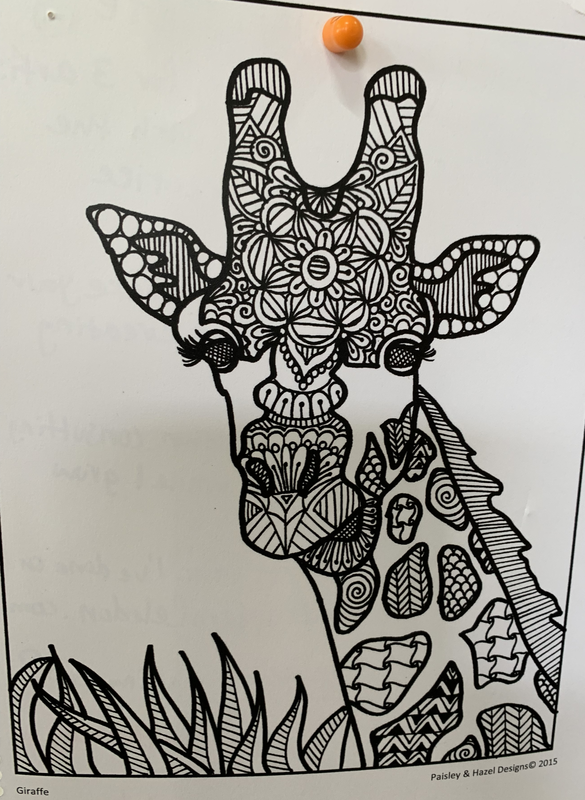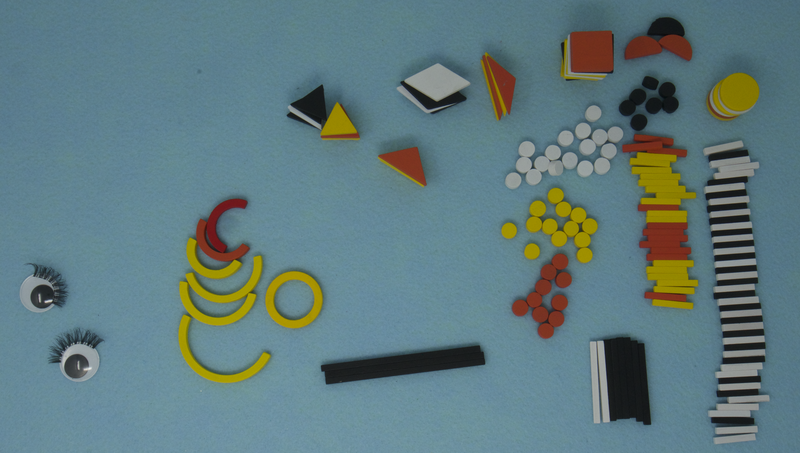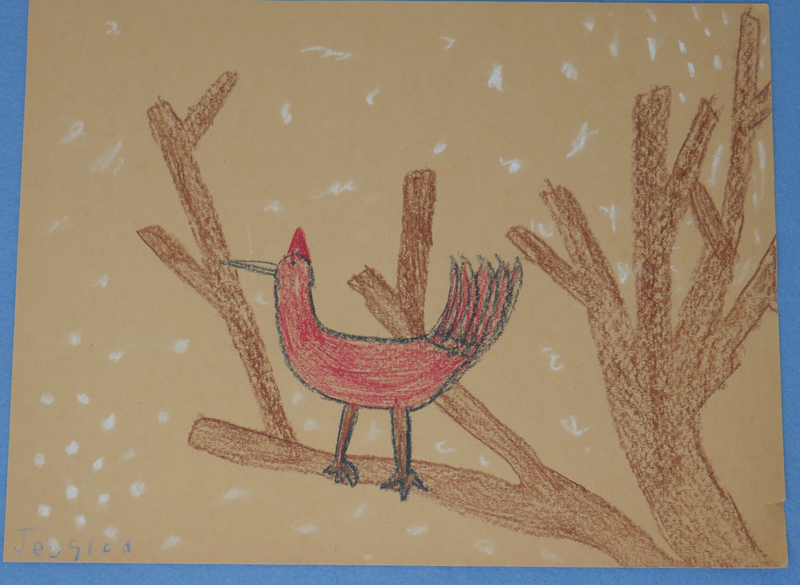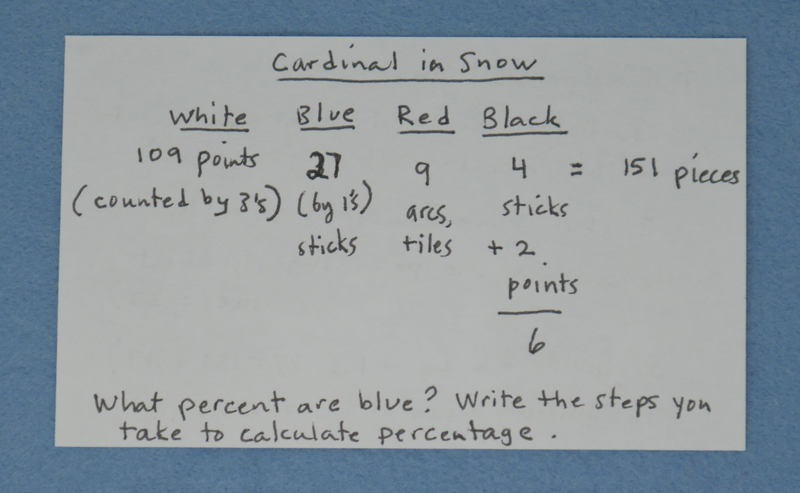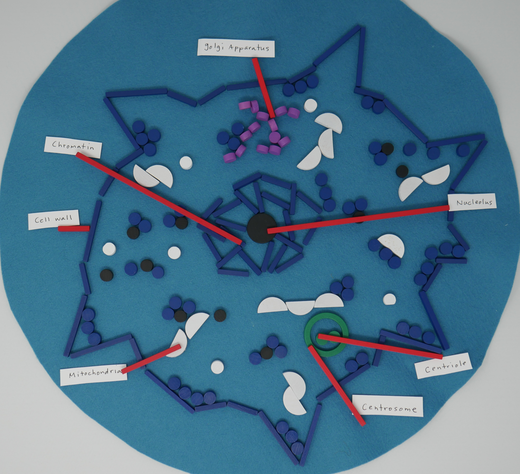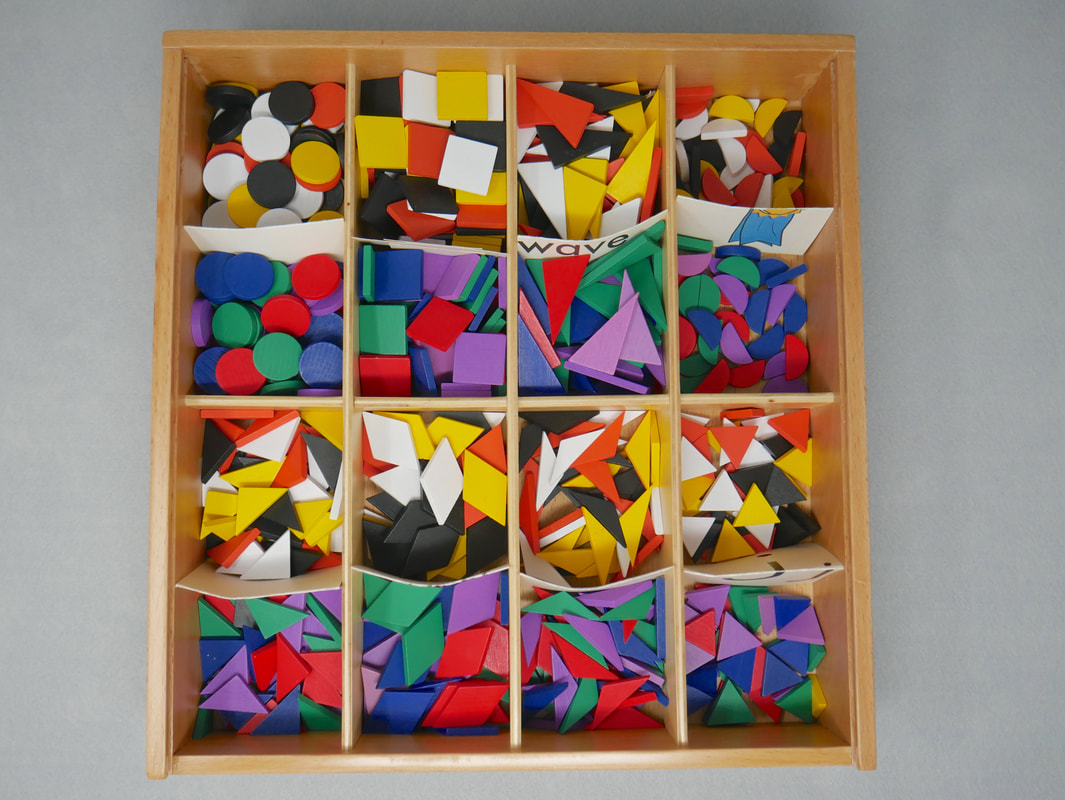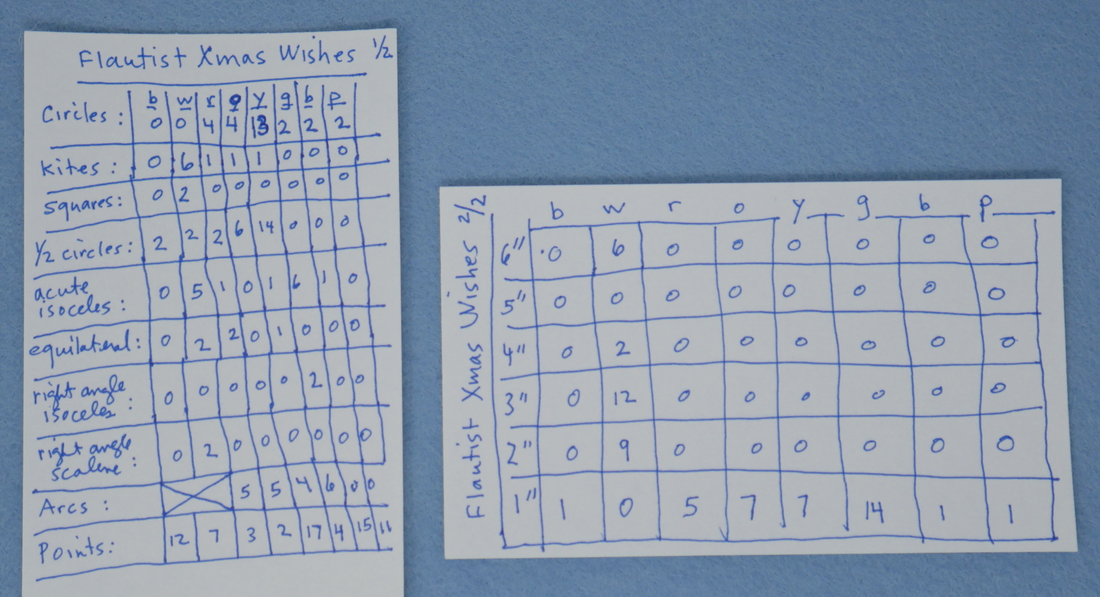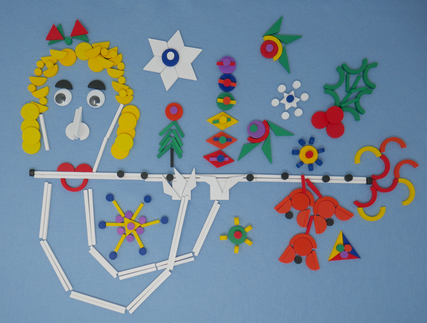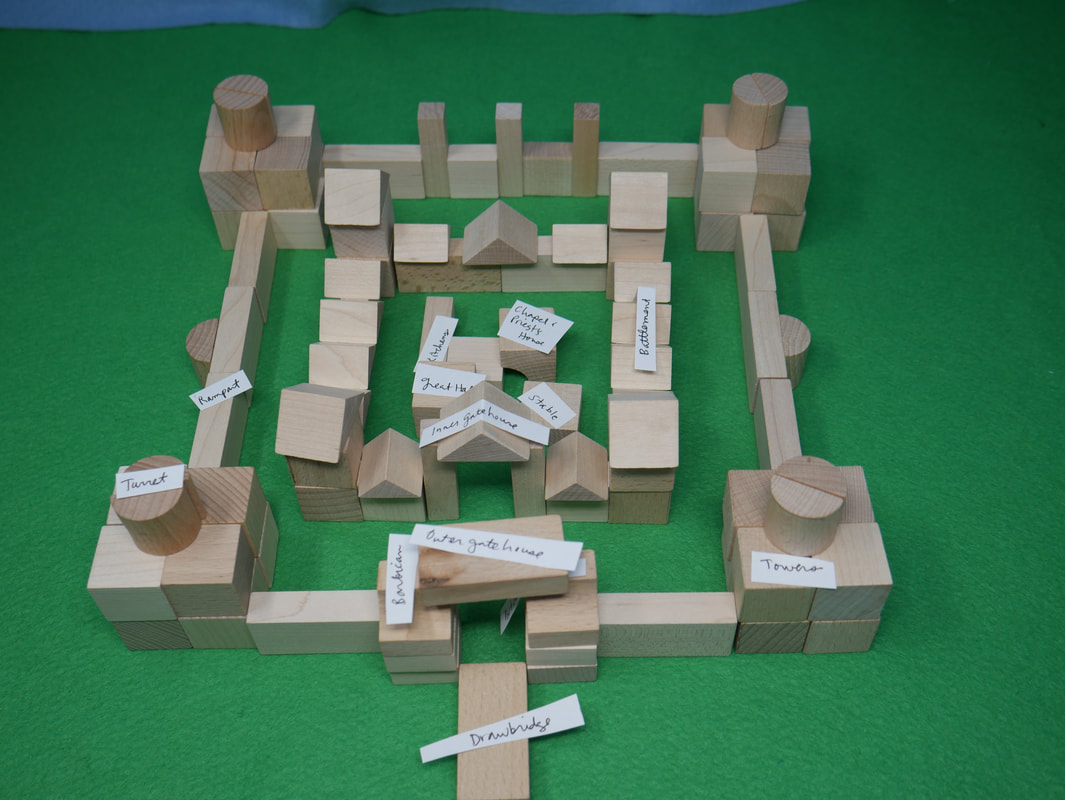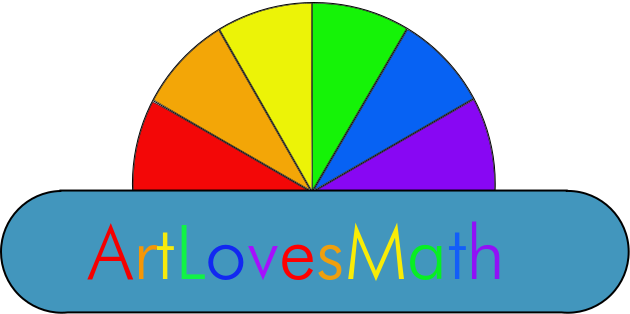Things you can build with a BIG supply of blocks.
Coloring book design prompt
I found a coloring book page at the Austin Creative Reuse shop, and used it as a prompt for a tile, stick, arc, and points giraffe. The final photo is the prep for putting everything away - depending on the age of the student, math enhancement can be as simple as counting the colors or as complex as calculating the percentages of available types of blocks used in this one project. Building a picture can illustrate a researched report or a story.
A complicated build, for the Iron John movie I'm working on - but it still demos the process: make a picture from a prompt or not, then when you're ready (ideally the next day), sort the pieces to get ready to return them to their box. This is where the math likes to play!
Estimate first, and document the student's estimates, or have them do so. Then count, document, and return each set to the boxes. Then compare student's estimate to the actual data.
Here what's most important is, not to treat the estimate as a "mistake". Brain-friendly education means the attitude of the adult/teacher is "I love thinking about math with you". In my example, I used my big mistake as an opportunity to do more calculations.
Estimate first, and document the student's estimates, or have them do so. Then count, document, and return each set to the boxes. Then compare student's estimate to the actual data.
Here what's most important is, not to treat the estimate as a "mistake". Brain-friendly education means the attitude of the adult/teacher is "I love thinking about math with you". In my example, I used my big mistake as an opportunity to do more calculations.
Introducing Boxes 7, 8S, 8R, and 9 - my favorite Froebel Gifts!
Take a drawing the child has made - I used Cardinal in Snow, drawn by Jessica age 7 (me, 1966). Invite the child to watch you build a "version" of their picture, using tiles, sticks, and points. Demonstrate that pieces are removed from the boxes one by one, and tell the child that these boxes are never dumped. Demonstrate rearranging the design until you are happy with it, and being content with the two versions never completely matching. Photograph the build, and print a copy if desired.
When it's time to put the construction away, math practice opportunities arise! Options include: show how to skip-count pieces, invite child to tally or graph, practice calculating percentages.
Addressing errors: ask the child to talk about how they got their answer. This process usually results in children realizing the error on their own. Never point out academic errors. It's a good idea to ask the child to describe how they got their answer even when you know they are correct - that way they don't assume questions mean the authority figure knows something they don't. Instead, questions are associated with interest.
When it's time to put the construction away, math practice opportunities arise! Options include: show how to skip-count pieces, invite child to tally or graph, practice calculating percentages.
Addressing errors: ask the child to talk about how they got their answer. This process usually results in children realizing the error on their own. Never point out academic errors. It's a good idea to ask the child to describe how they got their answer even when you know they are correct - that way they don't assume questions mean the authority figure knows something they don't. Instead, questions are associated with interest.
